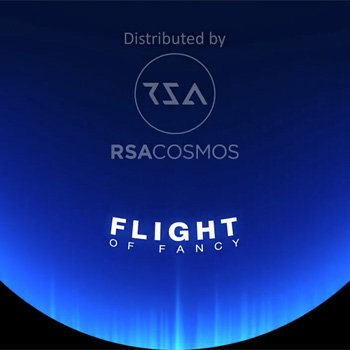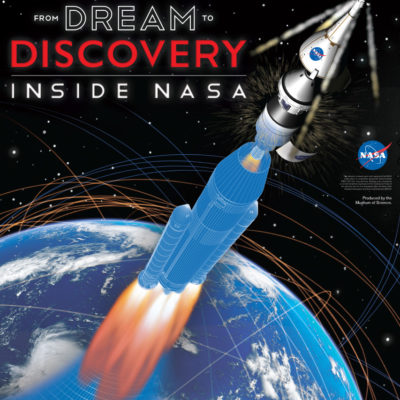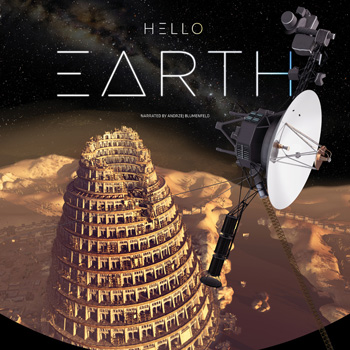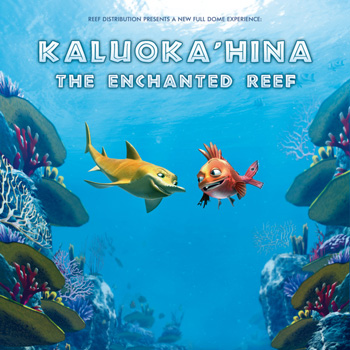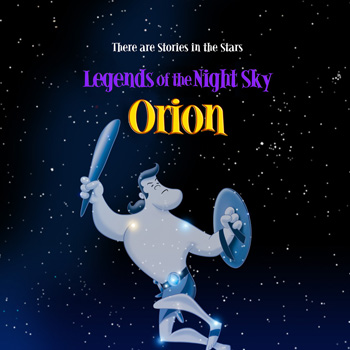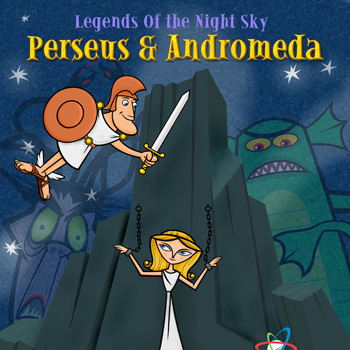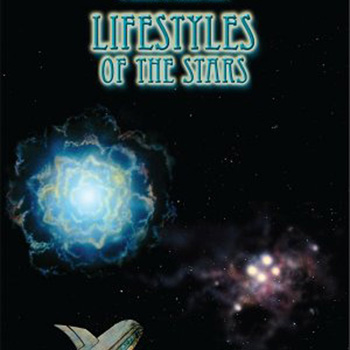

In February 2013 an one man made the incredible – a space jump. He jumped from an altitude more then 120,000 feet, broke the speed of sound in freefall, and set several world records. Millions people all over the world watched his jump online.
After landing he said, “In my mind, I did that jump many times. I was ready to go.”
Do you want to feel what it is to jump from the edge of space?
Flight of Fancy will put you in this man’s place, you will see our planet from space with his eyes, get over the fear of a “death spin,” and experience amazing virtual G-forces!
The show combines the newest fulldome technology and excellent computer graphics. The 3D effect all around you will make you the hero of the show.
Flight of Fancy is not just a space jump; it is an extreme adventure within the human imagination. Many worlds that we create in our mind are passing by, one after another, with the speed of thought.
Take your own flight of fancy!
For planetariums and digital dome theatres.
Develop a renewed appreciation for our fragile planet through the lens of astronomy as Sigourney Weaver guides audiences on an immersive excursion that explores a universe filled with the possibility of life.
Fragile Planet starts with an astronaut’s view highlighting Earth’s unique regions. The journey then continues to the Moon, Mars, and beyond the Milky Way to search for habitats that might host extraterrestrial life. The show’s theme — that Earth is the only known haven for life, and thus is important to protect — echoes the themes of biodiversity and sustainability.
The foundation of the show lies in scientific visualization, utilizing observed data as the starting point for the imagery. More than three dozen researchers and institutions provided data in support of Fragile Planet; their contributions range from high resolution satellite imagery of Earth to the positions of galaxies more than 50 million light years away.
From the three-dimensional terrain of Valles Marineris on Mars to the locations of extrasolar planetary systems in interstellar space, everything audiences see in Fragile Planet is based on astronomers’ best understanding of the universe. Scenes requiring extrapolation from known observations were developed with the assistance of researchers with expertise in the relevant topics.
Fragile Planet was written and produced by the visualization studio of the California Academy of Sciences. For two sequences in the show, they collaborated with the National Center for Supercomputing Applications (NCSA) at the University of Illinois at Urbana-Champaign. The spectacular visuals are augmented by an evocative, multi-dimensional sound environment by renowned giant-screen composer Michael Stearns.
Experience the challenges of the next generation of space exploration in this brand-new Planetarium show. By using exciting real-life projects like NASA’s James Webb Space Telescope and the New Horizons mission to Pluto, the show highlights the extreme nature of spacecraft engineering and the life cycle of a space mission — from design and construction to the rigors of testing, launch, and operations. Blast off and take the voyage with us!
Eugene Milkman, nicknamed Milky, is an old robot – a small but strong man – who has been delivering milk for over 800 years on behalf of the company Galaktos. Starting his new tour, he takes Craig McIntosh, a young internship who almost quit going to school, and they both take off for a journey through the Milky Way. Milky evokes the memories of his career while Craig learn more about magnificent cosmic landscapes. From stars to nebulas, this fantastic trip will drive them up to the dreadful black hole hidden at the center of our Galaxy!
“In the beginning, God, God created the heavens and the earth. And the earth was empty and without order between darkness on the face of the abyss … and the spirit of God that remained above the waters said: Let there be light; And there was light. And in that way, he separated the light from the darkness … In the light, he called it day, and the darkness he called night … “
This phrase that is extracted from the old testament of the Bible, belong that which relates the creation of the universe in the so-called first book Genesis – from the Christian Bible – serves as a conceptual basis for a free recreation of the structure of the universe, man and earth: It is an open and personal interpretation – free of religious or scientific character – to explore abstract concepts of the beginning of life and the universe.
Genesis is a real-time fulldome show for planetariums and digital dome theatres.
Music by Pina.
Living networks connect and support life forms large and small — from colonies of tiny microbes and populations of massive whales to ever-expanding human societies.
In the California Academy of Sciences’ 2015 original planetarium show, Habitat Earth, discover what it means to live in today’s connected world.
Through stunning visualizations of the natural world, dive below the ocean’s surface to explore the dynamic relationships found in kelp forest ecosystems, travel beneath the forest floor to see how Earth’s tallest trees rely on tiny fungi to survive, and journey to new heights to witness the intricate intersection between human and ecological networks.
Narrated by actor Frances McDormand, this 2015 show from the Morrison Planetarium features stunning visualizations of both biological and human-built networks (and of how they intersect), taking show-goers on an incredible, immersive journey through the interconnectedness of life on Earth.
“In Habitat Earth,” says Ryan Wyatt, Director of Morrison Planetarium, “we’re advancing the boundaries of traditional planetarium content, which focuses primarily on astronomy and space.” Instead of looking solely to the stars, the Morrison team is using advanced digital tools and scientific data to tell stories that are uniquely Earth-focused.
The show details the ways humans fit into this ever evolving story of connection. And along the way, audiences will learn more about what we can do to ensure that our cohabitation with the natural world leaves a healthy, sustainable planet for generations to come.
Why do we long for contact with others so much? Does Internet really connect people? How can we tell other potential inhabitants of the Universe that we’re here?
Seeking contact with others remains one of the earliest and strongest humans’ needs. By trying to fulfill this need, we invented writing, radio, telephone, and finally – the Internet. We overcame language barriers, problems related to distance, and information flow time. Thanks to modern technologies and communication devices, we develop our civilisation – we are changing the world and ourselves.
Hello Earth will take you on a journey through landmark moments of the history of communication: you will fly over the mythical Tower of Babel, see the first pictograms – paintings in Lascaux Cave, pay a visit to Johannes Gutenberg, visit a surrealistic library, witness the first ever phone call, see the beginnings of the Internet, and launch of the Voyager. You will immerse into Space and – who knows – maybe you will hear someone seeking contact you with?
Embark on a journey back in time and across the Solar System, following the paths of asteroids and comets that have collided with Earth—and those that roam far from home. These ancient objects travel billions of years before reaching Earth, and their impact can be so powerful that just one collision can change the course of life on our planet.
Scientists aren’t waiting for asteroids and comets to come to us to learn more about them — get an up-close look at spacecraft sent to rocky asteroids and icy comets to collect invaluable data. You’ll follow the trek of the Chelyabinsk meteor as it entered the Earth’s atmosphere in 2013 and visualize major shifts in the history of the Solar System billions of years in the making—and all in under an hour.
Journey to the Stars, narrated by Academy Award-winning actress Whoopi Goldberg, features extraordinary images from telescopes on the ground and in space and stunning, visualizations of physics-based simulations. This dazzling space show launches visitors through space and time to experience the life and death of the stars in our night sky, including our own nurturing Sun. Tour familiar stellar formations, explore new celestial mysteries, and discover the fascinating, unfolding story that connects us all to the stars. Those who come along for the journey may never see the night sky in the same way again.
Journey to the Stars is an engrossing, immersive theater experience created by astrophysicists, scientific visualization, and media production experts from the American Museum of Natural History with the cooperation of the National Aeronautics and Space Administration (NASA) and more than 40 leading scientists from the United States and abroad. The Space Show takes viewers 13 billion years into the past, when the first stars were born, so audiences can witness the brilliant supernova explosions that sent new kinds of atoms coursing through the universe, some of which eventually ended up in our own bodies and the air we breathe. A striking tour of the heavens introduces audiences to the life cycle of stars, from the birth of our Sun in a stellar cluster swaddled in its natal gas and dust clouds to a system with a brown dwarf circling a red star to white dwarfs that have reached the end of their stellar lives.
In this delightful and charming show for children, Khrumka and his friend, Kippy, lean about space in their little school in the fairy tale forest and then, accompanied by their cute robot, Robik, go on an amazing journey through the Solar system in a magic rocket.
This work celebrates human intuition and its capacity to image the invisible and sing the inaudible. Immersed in the action, spectators take part in the motions of the cosmos, at once simple and complex, always extraordinarily rich. In this voyage through the world of waves (whose apt title is the Greek word for “wave”), light and sound envelop us and transport us from the infinitely small to the infinitely large — emphasizing, in the middle, the locus of living things.
Legends of the Night Sky: Orion is the world’s first traditionally animated fulldome movie. Legends takes an imaginative look at the stories and legends about Orion, the great hunter of the winter sky. It’s ideal for family audiences and younger viewers. Greek mythology will never seem the same once you’ve seen this fun-filled production from AudioVisual Imagineering and Spitz Creative Media.
Leo is an educational project about Art and Science, where two techniques are combined, puppets carved in wood and digital animation, with the aim of entertaining children and adults to awake their interest in Art and Science. With Leo and Art we take a journey through the history of Art and learn the basics of some of its most significant moments, such as the beginning of what is meant by art, with cave paintings, the genius of Art and Science of Leonardo Da Vinci and we learn that there is not only one way to see the stars with Van Gogh.
Two hundred miles north of the Arctic Circle, near the jagged tips of Norway’s crown, the sun does not set for weeks on end during the summer months, and the midnight sun bounces off fields of midsummer snow.
Sami herders call their work boazovázzi, which translates as “reindeer walker,” and that’s exactly what herders once did, following the fast-paced animals on foot or wooden skis as they sought out the best grazing grounds over hundreds of miles of terrain.
An aurora borealis is a natural light display in the sky, especially in the high latitude regions, caused by the collision of solar wind and magnetospheric charged particles with the high altitude atmosphere.
The Finnish name for the northern lights “revontulet” is associated with the arctic fox. According to a folk tale, moonlight is reflected from the snowflakes swept up into the sky by the fox’s tail.
A fulldome show for planetariums and digital dome theaters.
How did life on Earth begin? This tantalizing question forms the basis of a magnificent production by the California Academy of Sciences Morrison Planetarium.
Life: A Cosmic Story begins in a redwood forest with the sounds of wind and life. One redwood looms larger, and as we approach its branches and enter one of its leaves, we adjust our perspective to the microscopic scale inside a cell. We see a pared-down version of its inner workings, learning about the process of photosynthesis and the role of DNA. This scene sets the stage for the story of life.
We then leap backward billions of years to the origin of elements themselves. The early Universe contained mostly dark matter, which drew hydrogen and helium together to form the first stars. The carbon and heavier elements required by living organisms came from generations of stars.
We continue our journey, diving into the Milky Way Galaxy as it was several billion years ago. We approach a region in which stars are forming, where we encounter a protoplanetary disk surrounding our newborn Sun. We arrive at the young Earth, splashing down in deep water to visit a hydrothermal vent and to examine the formation of organic molecules. We then travel above a volcanic island to encounter an enriched “hot puddle” of water, in which nucleotides (building blocks of RNA and DNA) may have wrapped themselves in protective vesicles.
The show leaps forward in time, showing the movement of continents and the changing environment for life. Finally, we reach modern Earth, circling the globe to review the evidence for the story we have heard. Much of what we understand about evolution we have pieced together from the fossil record, but we can also reassemble evolutionary history by studying life that surrounds us today.
As we learn that all life shares a common ancestry and common chemistry, we pull away from individual images of life, and we end the show as we see their three-dimensional distribution form the double-helix strand of DNA. The audience is left immersed inside a representation of the structure of life’s shared origins.

